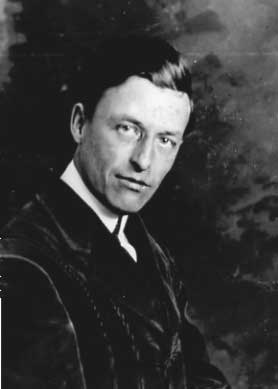C.K. Chatterton
c. 1903
Yes, The Chase School was like no other. It was more than the sum of its parts: the smoke-filled studios; the exceptional instructors; the little bakery shop where, for ten cents, we got milk and buns - or the "real" restaurant down the street where, if we were flush, we got a dinner of Beef a la Mode (usually slightly tainted) for twenty-five cents; the Saturday night operas (standing room in the top gallery for fifty cents); the theatre - Maude Adams, James O'Neill, William Faversham, Weber and Fields, Lillian Russell, Sothern and Marlowe. It was a way of life. But, perhaps in the final analysis the group living that life was the most remarkable thing about the school. I doubt that there has ever been so much talent and individuality studying under one roof at the same time.
There was Rockwell Kent - athletic, the exponent of the strenuous life, arriving on horseback from his home in Tarrytown, organizing a ball team to play the Art Students League (of course we won - five of six games); Gifford Beal, tweedy, cigar clenched in his teeth at an improbable angle, already exhibiting at the National Academy while still at school. There was Joseph Stella, big, swarthy, a paintbrush between his teeth, working furiously; witty Jack Duncan, monitor and good fellow, the arbiter of all school questions. There was Charles Rosen, painting huge, life-sized canvases with astounding dexterity; Glenn Coleman sketching East Side types; Jack Chamberlain making posters. There was funny-man Robert Wildhack, poster painter and vaudevillian; Lindley Hosford, distinguished and haughty; Edmund Graecen, later director of the Grand Central School of Art.
There were illustrators E. Ward Blaisdell (animals), and tall, southern F. Graham Coots (society girls like Christy's), and Coles Phillips who sold his drawings of charming girls to Life and did the advertisments for Onyx Hosiery and Community Silver. Briefly with us were Marsden Hartley, gaunt and serious, and Vachel Lindsey, who already had some reputation as a poet. There was Ray Bredin, who could draw so rapidly with skill and charm; Charles S. Chapman, tall and lean, the cleverest draughtsman in the school; Robert Spencer, who worked as though driven on huge life studies which he scraped out at the end of each morning.
There was Edward Hopper, tall, big-boned, and solemn, but with nice flashes of dry humor; literary Guy Pene DuBois, with his fine color sense; handsome, tanned Belmore Brown, artist and arctic explorer. And, often with us (though not in the class) was George Bellows, Henri's closest disciple.
As Kent solemnly said to me years later, "There never was a school like it."
